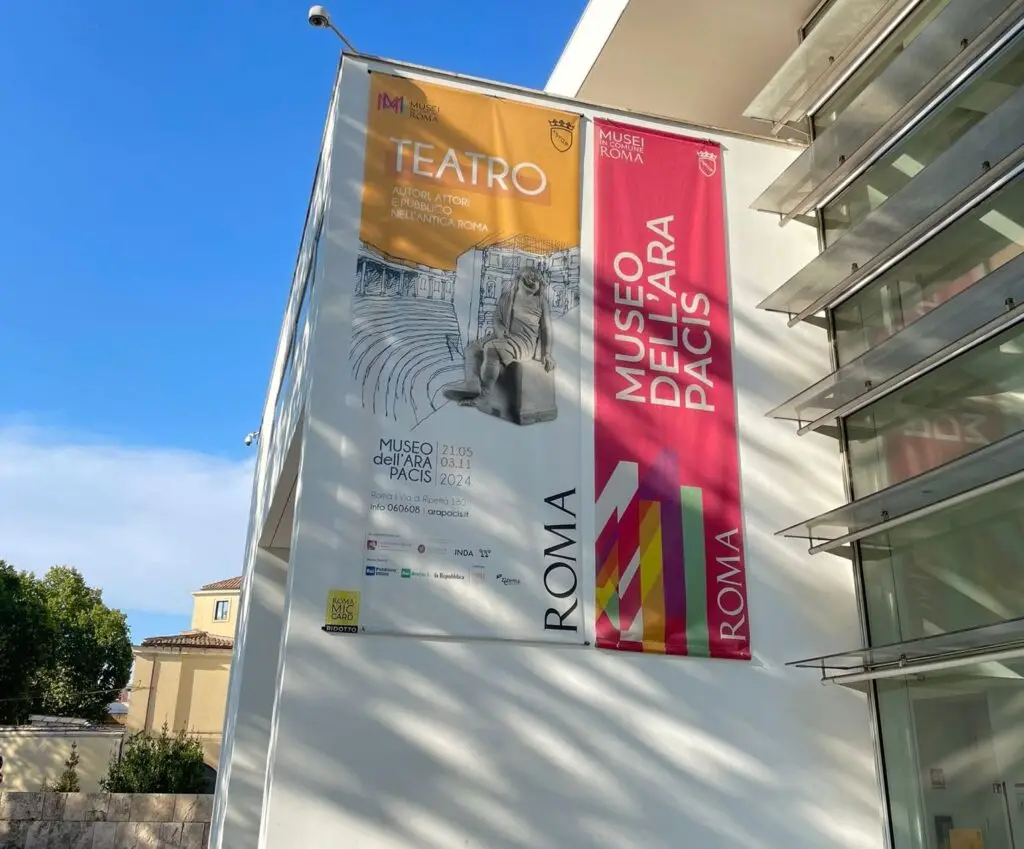New Theatre Exhibition, Ara Pacis: Where are all the slaves?

Original Review published in La Repubblica 27th August 2024.
I was very excited to see the new Roman theatre exhibition on display in the Ara Pacis Museum. However, as I walked around the exhibit, I became increasingly uneasy. A persistent question was worrying me. Where were all the slaves?
As almost any ancient theatre historian will tell you, Roman theatre was slave theatre. The main characters in the Roman comedies were slaves and these slave characters wore extremely grotesque masks. They looked completely different from freeborn characters, and they dominated the plotlines of popular Roman comedies. In the well-known plays of Plautus and Terence, the slave characters manipulate their masters, scheme against villains, and work to obtain their freedom.
At first glance, the advertising for the exhibition seems to be engage with this essential and controversial aspect of Roman theatre. The poster which swings high above the exhibition space is emblazoned with a carved statue of a seated slave character. It is an extraordinary object, exquisitely carved. Yet, the exhibition simply labels this object as a ‘statuette of seated actor.’
But this is incorrect. The carved actor is wearing a grotesque slave mask and is sitting not on a box but on an altar. It is a representation of a well-known comic scene in which the slave character claims religious sanctuary at an altar to escape his master, who is threatening to beat him violently. It is a scene which uses physical violence against slaves as a comic device. So why does its label not describe what is being represented?
Today, modern theatre companies work hard to improve the diversity of their casting and the inclusivity of the stories performed. We should expect our histories of theatre to do the same. We should foreground, investigate, dissect, and appreciate the role of enslaved peoples in the theatre of the ancient world, rather than obscure their role in ancient performance. It is not possible to tell an accurate history of Roman popular theatre without examining the main character of the slave.
Unfortunately, the question that remained when I left an otherwise well-executed and cleverly interactive exhibition, was whether the slaves had been deliberately excluded from the narrative.